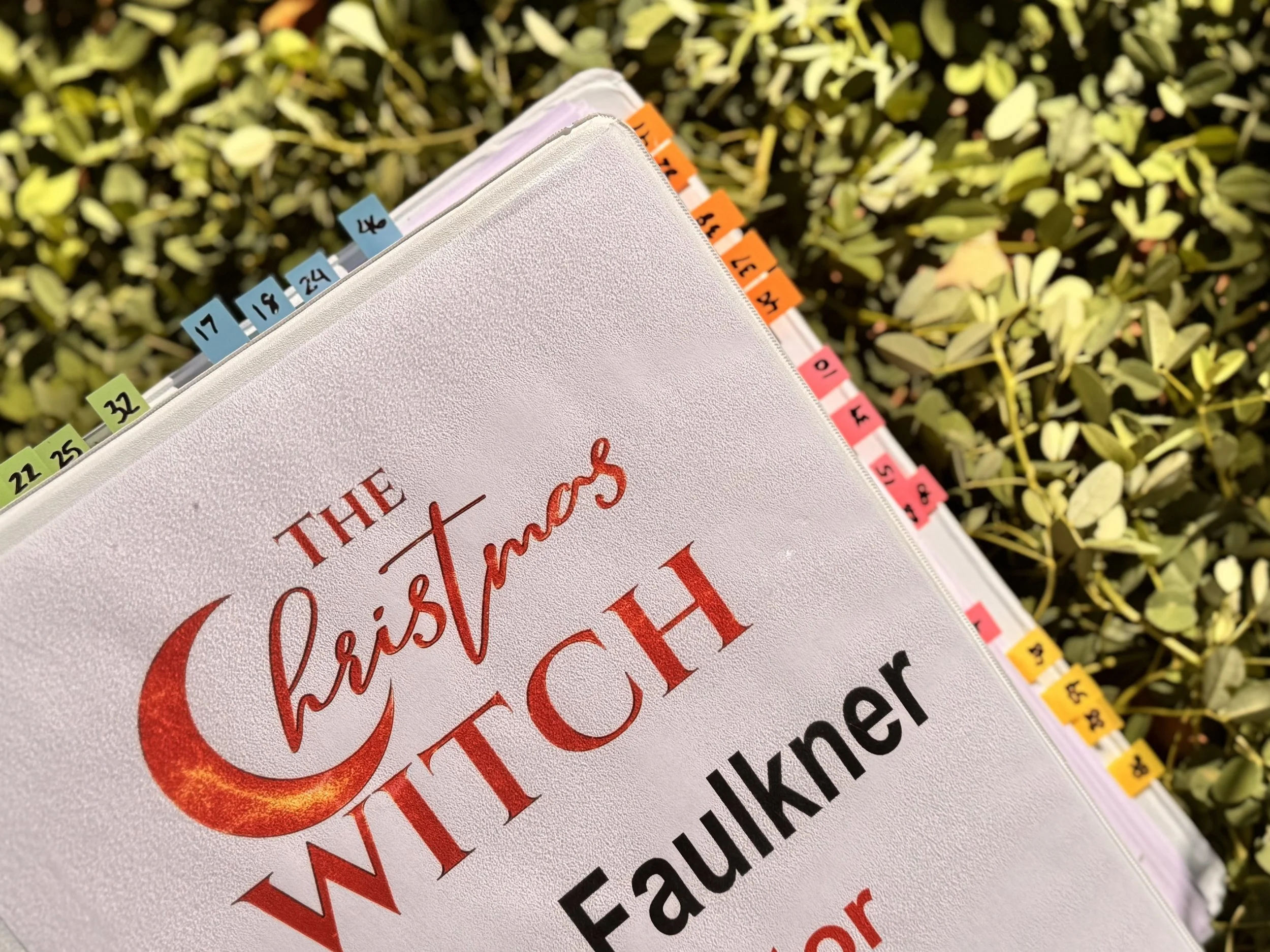Lessons from the Director’s Chair: Tips, Tools, and Indie Hacks
Directing is one of those roles that looks glamorous from the outside, but when you’re in the middle of it, it’s equal parts creativity, problem-solving, and trust. Every day on set is full of decisions—some small, some huge—all of which shape how a story comes alive on screen.
Over the past few years, I’ve been learning and growing as a director while bringing Amberlight Valley and The Christmas Witch to life on film. Along the way, I’ve discovered what works for me, what keeps me grounded, and what makes the impossible possible. Today, I want to share a few of my favorite lessons and tools with you—whether you’re a filmmaker yourself, a storyteller curious about the process, or just someone who loves a peek behind the scenes.
My organized chaos script binder!
What’s your favorite directing tip for first-time filmmakers?
It always comes down to team for me. Surround yourself with people you can trust. If you can trust that they’ll tell you the truth, and you can trust that they’re bringing their best selves to set, you are golden. A team that is ready, willing, and has your back is worth its weight in gold. Filmmaking is collaborative at its core—having a strong team makes all the difference.
What’s in your “director’s toolkit”?
For me, organization is everything. I color-code my filming days with tabs in my script, each day getting its own color. On each tab, I write the scene number so I can flip to it quickly.
Here’s where my neurodivergent brain loves this process: when we finish a scene, I remove the tab and place it in a folder. By the end of the day (ideally), all the tabs of that color are gone. If not, I make a new color tab and move the unfinished scenes to the next day. Visually, it gives me an at-a-glance understanding of our pace and what’s still ahead.
It’s a small ritual, but it keeps me grounded and helps me track progress in a way that feels tangible.
What are some budget-friendly hacks you’ve learned while directing indie films?
One word: collaborate.
I can’t even begin to express how grateful I am for the local businesses and friends who’ve helped bring Amberlight Valley and The Christmas Witch to life. From food and meal donations (crafty is a must—always feed your people!) to location support, collaborating with the community has been the biggest budget saver. Indie film thrives on generosity, creativity, and teamwork—and our community here in the White Mountains has been incredible.
How do you know when a scene is truly done?
For me, it’s a mix of story, time, and perspective.
Story first: if we haven’t communicated what the scene is supposed to share, it’s not done. Period.
Time next: on jam-packed days, pacing matters. Sometimes you can’t chase every idea, and that’s okay.
Perspective last: if there’s space in the schedule, I love adding a quirky new shot or a fresh angle just to see how it plays.
Ultimately, if the story has been told and it feels complete—that’s when I know we’ve captured what we need.
Directing has taught me so much about trust—trusting my team, trusting the process, and trusting that a story knows how it wants to be told if you’re willing to listen. Every scene is a balancing act between vision and reality, creativity and constraint. And yet, that’s what makes it so rewarding.
Kyra Crespin, Dalea Faulkner, Bernie Tarin, & Ron Pekara behind the scenes, filming The Christmas Witch at Blue Ridge High School.
For me, directing isn’t about perfection—it’s about collaboration, curiosity, and heart. If you’ve ever dreamed of telling stories through film, I hope some of these insights help you take that first step. Because once you’re on set, surrounded by a team who believes in the story with you, you’ll realize the same thing I did: you’re not doing this alone.
🕯️ Wander into Amberlight and beyond—sign up for updates, secrets, and the occasional enchanted surprise.




